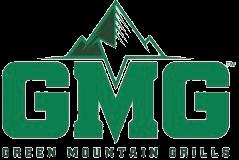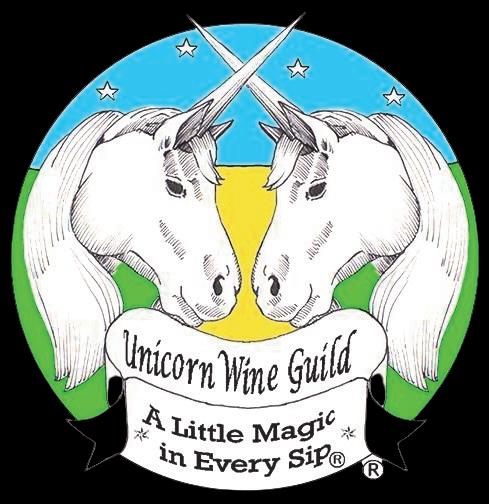







Idaho boasts some amazing geographical features. Come along with Tidbits as we take a tour of the state!




• At Hagerman Fossil Beds National Monument near Hagerman, Idaho, visitors can find a greater variety of preserved species from the Pliocene age than any other place on Earth. There are over 180 animal species here, along with 35 plant species. Eight of the species uncovered here have never been found anywhere else, and another 43 species were found here first. The Hagerman horse, similar to an ancient zebra, is Idaho’s state fossil. Archaeologists speculate that this great concentration of animals gathered around a drying lake during a time of extreme drought, dying of dehydration some 3.5 million years ago.
• At the Fossil Bowl near Clarkia, wellpreserved leaves, insects, fish, and flowers have been entombed in soft clay for the past 15 million years. For a fee of $10, amateur archaeologists can easily pry the layers apart, taking as many ancient fossilized leaves as they care to dig up. Some of them even retain their original brilliant colors until the moment they hit the air and turn black.
(continued)






























is Published & Distributed Weekly By: CindAl Publishing Company 812 55th St. Vienna, WV 26105 e-mail: alan@tidbitsmov.com
Advertising: 304.210.3812
We reserve the absolute right to accept, reject, discontinue or refuse any advertisement personal or commercial that we deem may not be conducive for our publication or Tidbits®. The publisher does not assume any responsibility for the claims of its advertisers. Tidbits® is committed to remain a family oriented publication. www.tidbitsmov.com
• For over a century, Idaho’s Silver Valley in the panhandle near Coeur d’Alene led the world in the production of silver, lead, and zinc. Approximately one billion ounces of silver came out of the region. Today, Mexico is the world leader in silver production.
• At Lava Hot Springs near Pocatello, the water has been flowing out at 110° F for an estimated 50 million years. The waters feed a number of nearby pool complexes, bathhouses, and water parks.
• Along the Thousand Springs Scenic Route, there truly are nearly a thousand springs bursting out of the canyon walls. The water makes its way from an aquifer near Arco, taking about 200 years to travel the 400 miles (644 km), averaging 10 to 30 feet per day as it moves through subterranean passageways.
• Big Springs near Island Park pumps out 92,000 gallons (35,000 l) of water every minute. The water forms a river called Henry’s Fork, named for fur trapper Andrew Henry who established a trading post here.
• Archaeological excavations at the Wilson Butte Cave near the town of Eden have uncovered artifacts carbon-dated at 14,500 years old, making them among the oldest evidence of human habitation in the New World ever found.
• The Snake River drops over 8,500 feet (2591 m) in elevation over its entire length. It is the largest tributary of the Columbia River.
• The Snake River has been flowing for about six million years, gradually etching Hells Canyon deeper each year. Then, about 14,700 years ago, a giant lake called Lake Bonneville drained catastrophically all at once. This phenomenal deluge transformed the topography of the region all the way to the Pacific Ocean. It gave greater shape and depth to Hells Canyon. (cont)

In this issue of TidbitsMOV our boy Tommy Tidbits is hiding Find him and enter the weekly contest, please send us a message including your name, Postal mail address the issue number you are referring to and which ad is hosting Tommy for the week! Visit www.tidbitsmov.com or send the answer with the above information to alan@tidbitsmov.com OR you may send us a private message to our Facebook page - @TidbitsMOV. PLEASE do not post the answer directly to the page - that ruins the fun for everyone. All winners will be drawn randomly from correct responses and will be posted weekly. As with all our contests, though you are welcome to play every week, you are only eligible for one winner per household per month.

























• The Snake River runs 1,078 miles (1,735 km) and is the 9th largest river in the U.S. Of its total length, 779 miles (1,254 km) are within the border of Idaho, from where it enters at Wyoming to where it exits at Washington. This is the longest stretch of river within a single state outside Alaska.
• Although Idahoans often boast that Idaho is home to North America’s deepest canyon at Hells Canyon, a closer look shows that is untrue. From the Snake River to the top of the tallest peak, He Devil Mountain, it’s a distance of 7,900 feet (2408 m). That is quite a bit more than the Grand Canyon, which is 5,500 feet (1,676 m) from river to rim at the deepest point. However, Kings Canyon in California’s Sierra Nevada range is even deeper, rising from the level of the Kings River to the top of Spanish Mountain, which towers 8,240 feet (2,511 m) above the river.
• Because Shoshone Falls presents an impenetrable barrier to fish navigating up the river, a tremendous number of salmon, trout, and sturgeon gather at the foot of the waterfall to spawn, which historically provided a good source of food for tribes living in the area. The number of fish has since been greatly diminished due to the number of dams on the Snake River.
• On October 28, 1983, an earthquake that measured 7.3 on the Richter scale roared through the Lost River area near Challis. Although it was stronger than the California quakes in 1989 and 1994, it only killed two people because the region is so sparsely inhabited. Off U.S. Highway 93 there’s a viewing area where travelers can see the scarp heaved up by the quake. It’s 21 miles (34 km) long and up to 14 feet (4.3 m) high. Mount Borah, the tallest peak in the state, gained 2 feet (0.6 m) in elevation after the quake, now standing at 12,662 feet (3859 m). (cont)

Ohio Valley Hearing Professionals will provide everything you need to regain your hearing, including; testing, fitting, programming & maintenance.
We offer financing to fit every budget.
The Widex SmartRIC will go beyond better hearing to give you better living!



Support Clients In: Substance Use Treatment or Mental Health Programming or Individuals w/Intellectual & Developmental Disabilities Start at $13-$14/hr. Paid Time Off Paid Training Health & Wellness Benefits
Must Have: High School or Equivalent Education, Drivers License, Current Insurance, Drug Screen & Background Check





• The town of Island Park sits in the middle of a huge caldera (volcanic basin) that’s 15 miles (24 km) wide. Experts estimate the volcano here erupted continuously for thousands of years before collapsing.
• Craters of the Moon National Monument in Southern Idaho showcases the results of lava flows formed by a series of eight volcanic events that occurred in spurts between 15,000 and 2,100 years ago. Much of the lava here oozed through cracks in the surface, called a fissure eruption. There are also 25 different cinder cones throughout the region. At Hell’s Half Acre Lava Field, visitors can walk through lava tubes formed when flows of lava cooled and solidified on the outside while the hot magma inside continued to flow, leaving huge empty lava caves behind. The size of this national monument – 1,100 square miles (2,859 sq/km) –is nearly equal to the size of the state of Rhode Island. The area is so rugged that astronauts trained here to practice for moon landings. There are places where trees, incinerated by the heat of the lava, left perfectly formed molds behind.
• The opal mines in Clark County are the only place in North America where opals are present in large enough numbers to make commercial mining worthwhile.
• The trees at Roosevelt Grove of Ancient Cedars are around 2,000 years old.
• The Frank Church–River of No Return Wilderness is the largest designated wilderness area in the lower 48 states.
• The Spiral Highway north of Lewiston climbs up in a series of 64 switchbacks, gaining nearly 2,000 feet (610 m) in elevation in 7.3 miles (11 km). From the time it was completed in 1917 until Highway 95 bypassed it in 1979, it was the only road going north out of Lewiston.









up Mini Eggplant Pizzas the Italian Way
One of the joys of raising kids is making new friends with others who are also raising kids. When my three children were preschoolers, I regularly met up with neighborhood moms at the bus stop in the morning or for ball games at the park and story time at the library. As the kids grew, so did our friendships.
Six of us still make a point of getting together throughout the seasons to celebrate our birthdays. One recent gathering was particularly memorable. Instead of meeting at a restaurant, we donned aprons in one of our kitchens and huddled around the center island for a cooking lesson taught by my neighbor Cristina Garrasi Mazzei, an energetic mom from Italy. "To an American eye, Italy might seem the same with pasta and pizza wherever you go," she began. "But for food lovers, it's a country waiting to be discovered! Each region has its unique flavors and cooking techniques. For example, the taste of a simple ricotta cheese can vary from place to place," she explained. As she shared her passion for Italian food, she emphasized that using fresh, seasonal ingredients is the key to tasty meals. That's when she showed us how to transform eggplant into a light side dish called pizzette di melanzane, which is common in the Compania region where she is from.





Like a pizza minus the crust, these mini eggplant pizzas are tasty and versatile. Find Italy and the Compania region on a map in your home, and have fun preparing this easy and authentic Italian recipe with your kids: MINI EGGPLANT PIZZAS (PIZZETTE DE MELANZANE)
Makes 8-10 mini pizzas
1 large eggplant (about 1 pound)
3/4 cup tomato puree
4 cloves fresh garlic, chopped
Salt to taste
Dried oregano to taste
1 cup (or a 4-ounce bag) coarsely shredded mozzarella cheese
Parmigiano Reggiano (optional)
Preheat oven to 400 F. An adult should cut the eggplant into 1/2-inch-thick rounds. Arrange them on a lightly oiled baking sheet. Like constructing mini pizzas, let kids spoon the tomato puree over each round. Scatter the garlic and oregano, sprinkle salt to taste, and top with mozzarella. Add Parmigiano Reggiano if you wish.
Bake rounds in the oven for 25 minutes, or until mozzarella has melted completely and bubbles. Serve immediately as a light side dish with a summer pasta salad and other fresh vegetables. As an alternative, Cristina suggests serving the mini pizzas cold in a sandwich.
Cook's Note: If your child is like her young daughter, omit the garlic until they develop a taste for it.
***
Donna Erickson creates relationships and community through food and fun. Find more to nourish and delight you at www.donnaerickson.com.
(c) 2024 Donna Erickson Distributed by King Features Synd.


• Melanocytes are the cells in the skin that produce melanin. Melanin gives the skin, hair, and eyes their pigment. An abnormal group of melanocytes is called a mole. The word “melanin” springs from the Greek “melas,” meaning “black.”
• Melanocytes are evenly distributed all over the body, with thousands in every square inch of skin. The palms of the hands and soles of the foot have almost no melanocytes, so moles never appear there.
• It’s not known why melanocytes bunch up in clusters called “nests” that form moles. Moles often begin developing even before birth. Those are called congenital moles. About one out of every hundred babies has moles at birth. Moles that grow later in life are called acquired moles. Nearly everyone has moles, and most people have between ten and 40. Caucasians have the most.
• The more moles you have, the greater your risk of melanoma. For those with pale skin, repeated exposure to the UV rays in sunlight can alter moles, causing an increased risk of malignancy. However, only about one-third of melanomas start as moles.
• It’s important that people notice the moles on their bodies and learn to identify signs of skin cancer. Be familiar with the ABCDEs of moles and see a doctor if any changes appear in the Asymmetry / Borders / Color / Diameter /or “Evolving.”
• In a study, white children had an average of 17 moles, whereas non-white children had only 2.5 moles. White adults averaged 61, while non-white adults had 16. Moles also tended to be larger on white skin.
• New moles tend to pop up during periods of hormonal change, particularly during puberty and pregnancy. Most moles show up in the first 25 years of life. (Continued page #7)










ARIES (March 21 to April 19)
Avoid having someone else take credit for a project that you started by finishing it yourself. Then it will be you lovely Lambs who will be wearing those welldeserved laurels.

TAURUS (April 20 to May 20) The facts about a new opportunity are still emerging. Wait until they're all out in the open, then use your keen business sense to help make the right decision.
GEMINI (May 21 to June 20) You might feel confused or even hurt by a friend who suddenly puts distance between you. If they won't discuss it, don't push it. An explanation should come in time.
CANCER (June 21 to July 22) Your willingness to be part of a team opens doors that had been shut to you. Keep them open by honoring your promises, even when your commitment seems to be wavering.
LEO (July 23 to August 22) Congratulations! You're really getting things done to purrfection. And don't forget to take a catnap now and again to keep those energy levels up and bristling for action.
VIRGO (August 23 to September 22) Your plaintalking honesty is admirable, but sometimes sharp words can leave painful scars. Be careful that what you say doesn't come back to hurt you.
LIBRA (September 23 to October 22) A stressfilled period takes a positive turn as you deal with the underlying problem. Act now to avoid a recur-
rence by changing some basic rules in your relationship.
SCORPIO (October 23 to November 21) Your rising energy levels make it easier for you to achieve some important objectives. This could lead to a big boost in how you're perceived, both at home and on the job.
SAGITTARIUS (November 22 to December 21) A changing picture begins to emerge as you learn more about an offer that seemed so right but could be so wrong. Look to a trusted adviser for guidance.
CAPRICORN (December 22 to January 19) Spiritual aspects are strong. Take time to reflect on the path that you're on and where you hope it will lead you. It's also a good time to reach out to loved ones.
AQUARIUS (January 20 to February 18) You could be assuming far too many responsibilities, whether it's at work or in personal matters. Be careful that you're not weighed down by them.
PISCES (February 19 to March 20) You're getting closer to your goals. And since nothing succeeds like success (or the promise thereof), don't be surprised to find new supporters swimming alongside you.
BORN THIS WEEK: You are always the first to try new ventures and confront new challenges. You inspire others with your courage to follow your bold examples.
(c) 2024 King Features Synd., Inc.




















"There are only so many big box stores around here," said an acquaintance as we sat around chatting with our group. The topic was finances and how seniors are scrambling to stay afloat (and stay fed). Hence the interest in taking on a part-time job, possibly as a door greeter somewhere. "It's not like we're suitable for stocking shelves," she said. And we all nodded. A recent AARP survey said that 70% of us are concerned about prices going up faster than our income. If there's one thing we're all getting good at, it's math. Calculation of dollars in and dollars out are second nature now, and figuring out how many sandwiches can be made from various loaves of bread is easy math.
One of the group shared the result of the most recent survey of consumer finances by the Federal Reserve Board: The average 70year-old senior has $60,000 tucked away in checking and savings accounts. We laughed, but in a sad way as we contemplated having that much cash to rely on. But we weren't laughing when one of the group shared that her landlord is trying to increase her monthly rent by $300. I did a poll of our little group, with the question being: How do we survive this constant rise in prices of everything? The answers were varied. If you have a job and are thinking of retiring, keep working. Pay off all debts while you still have income, especially credit cards and cars. If you've already retired, sign up for every assistance program you can, including help with utilities and rent. Use the food bank or Meals on Wheels; call about community meals at churches or SNAP benefits. Look into drug discounts, perhaps at GoodRx. But the biggest suggestion was this: Try not to take Social Security until your full retirement age, which depends on your year of birth.
(c) 2024 King Features Synd., Inc.





















• When surgically removed by a dermatologist, moles will not recur.
• Though black people don’t get nearly as many moles as whites do, they do acquire spots commonly called “Morgan Freeman moles.” The medical term for these harmless dark growths is “dermatosis papulosa nigra” which is abbreviated as DPN. They generally start as flat freckles and slowly become small bumps over time. Unlike moles, DPN never turn cancerous. About one-third of people of African and Asian descent have these.
• Skin tags are another type of benign skin growth. Unlike moles, which are composed of melanocytes, skin tags are made of skin, fat, fibrous tissues, and blood vessels. They are usually flesh-colored and attached to a stalk (“pedicle”) which protrudes from the skin.
• Freckles are harmless small brown spots clustered on the skin. Caused by a localized overproduction of melanin, freckles are more common in people with blond or red hair, fair skin, and blue eyes. The tendency to have freckles is usually an inherited trait. Freckles become more prominent with exposure to the sun. People with freckles are more susceptible to skin cancer, although the freckles are not the cause.
• Another skin bump is called the cherry angioma These benign growths commonly crop up in adults after age 30 and are particularly common in adults 75 and over. Caused by a harmless collection of blood vessels, they are red or purple in color.
• Warts are different from moles because they are caused by the human papillomavirus (HPV). Warts do not become cancerous. Although they can develop at any age, they are more common in children than adults. Warts are contagious and can spread from one part of the body to another and from one person to another.



* To clean out your coffee grinder in order to use it for spices, add about a half -cup of white rice, then pulverize it. Repeat until scent is gone and rice powder comes out clean.
* It's food-smart to separate utensils and cutting boards used for veggies, meats, poultry, etc. Here's a handy chef's trick: Color code. Paint a different color stripe down the edge of cutting boards and around the handle of utensils for each variety: green for veggies, yellow for poultry and red for beef.

and splatters, and fumes will be much less bothersome." E.G. in Virginia
* "I needed a hot water bottle for my legs, but I couldn't find mine anywhere. My husband suggested filling a soda-pop bottle (the two liter kind) with hot water and wrapping a towel around it. It worked magically, and I think better than the regular bottle." C.C. in Iowa




* Line the bottom of your dog's food dish (underside) with silicone caulk. Use a crisscross pattern in the center. This will keep the dish from sliding around when your pet eats.
* "If you are painting your ceiling and are bothered by drips, try protecting your eyes with an old pair of swimming goggles. They will keep your eyes safe from drips
* Want quick-cooking meatloaf? Use your muffin tins. The same meat mixture and flavor cooks in half the time and is in a cute, easy portion. I also make mashed potatoes as "frosting" for these dinner "cupcakes"!
Send your tips to Now Here's a Tip, 628 Virginia Drive, Orlando, FL 32803. (c) 2024 King Features Synd., Inc.




